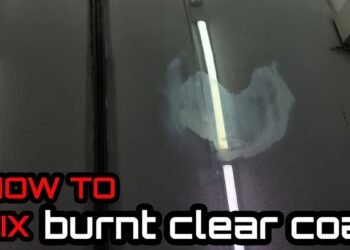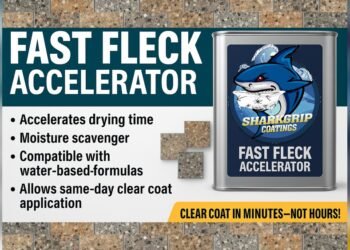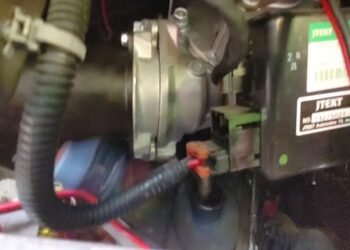Have you noticed a squeaking noise from your coilovers every time you hit a bump? That annoying sound can be more than just a minor nuisance—it might mean something’s off with your suspension.
Whether you’ve just installed new coilovers or have been driving with them for a while, understanding why they squeak over bumps is crucial to keeping your ride smooth and safe. You’ll discover the common causes behind that squeaking, how to quickly identify the problem, and simple steps you can take to fix it before it leads to bigger issues.
Keep reading to make sure your coilovers perform quietly and reliably every time you hit the road.

Credit: www.reddit.com
Common Causes Of Coilover Squeaking
Coilovers squeaking over bumps can be annoying and may signal a problem. Understanding common causes helps diagnose and fix the noise. Many factors make coilovers produce that squeaky sound during driving. Identifying these issues keeps the suspension smooth and quiet.
Loose Suspension Components
Suspension has many parts like control arms and sway bars. If any part becomes loose, it can rub and squeak over bumps. Loose bolts or joints cause movement and friction. Tightening these parts often stops the noise quickly.
Dry Or Worn Bushings
Bushings absorb shocks and reduce metal contact in suspension. Dry or old bushings lose lubrication and start squeaking. Worn bushings may also cause suspension play and noise. Regularly checking and greasing bushings prevents this squeak.
Top Mount And Bearing Issues
Top mounts hold the coilover to the car frame. Bearings inside allow smooth rotation of the suspension. If mounts or bearings wear out or dry, they create creaks and squeaks. Replacing or lubricating these parts stops the sound.
Incorrect Spring Rate
Spring rate affects how the suspension handles bumps. Too stiff or too soft springs cause abnormal movement. This can produce squeaks when driving over rough roads. Choosing the right spring rate for the vehicle reduces this noise.
Signs Of Coilover Noise Over Bumps
Coilover noise over bumps signals potential issues in your suspension system. Recognizing these signs early helps prevent damage and costly repairs. Noise often varies in type and timing, giving clues to the root cause. Understanding specific sounds aids in quick diagnosis and solution.
Squeaks When Turning
Squeaking noises often appear during turns. This sound usually comes from worn or dry coilover components. Rubber bushings or mounts can lose lubrication, causing friction. Tightening or lubricating these parts often reduces the squeak. Ignoring this noise can lead to more wear and tear.
Clunks And Rattles
Clunking sounds indicate loose or damaged coilover parts. These noises happen when hitting bumps or rough roads. Common causes include loose top mounts, sway bar links, or shock absorbers. Checking and securing these parts stops the clunks. Rattles can also come from worn bolts or nuts.
Noise Timing And Frequency
Noise timing helps identify the problem. Squeaks or clunks occurring only over bumps suggest suspension issues. Frequent sounds during normal driving can mean severe damage. If noise increases with speed or road roughness, inspect coilover mounts and bushings. Consistent noise needs immediate attention to avoid failure.
Settling Period For Coilovers
After installing coilovers, your suspension needs time to settle properly. This settling period helps reduce noises like squeaking over bumps. During this time, parts adjust and bedding occurs between components. Understanding this phase helps manage expectations and detect real issues early.
Factors Affecting Settling Time
Several factors influence how long coilovers take to settle. Vehicle weight plays a major role; heavier cars may need more time for the suspension to adjust. Coilover quality also matters—premium brands often settle faster. Installation accuracy affects the process too. Poorly installed coilovers might cause longer noise or uneven settling. Driving style impacts how quickly parts bed in, especially if you avoid harsh bumps initially.
Typical Mileage For Settling
Coilovers usually take between 300 to 500 miles to settle fully. During this distance, suspension parts compress and move to their proper positions. Some drivers notice squeaks or creaks during this period. These sounds often fade as the coilovers break in. Continuing regular driving helps speed up the bedding process. After 500 miles, most coilovers should feel smoother and quieter.
Driving Conditions Impact
Road surfaces greatly affect coilover settling. Smooth highways cause slower bedding since parts move less. Rough roads or city driving with frequent bumps can speed up the settling process. Frequent stops, turns, and potholes help parts adjust faster. Avoid extreme off-road conditions early on. Gentle driving during the first few hundred miles gives coilovers a better chance to settle evenly.
Credit: www.tacomaworld.com
Quick Fixes To Stop Squeaking
Squeaking noises from coilovers over bumps can be annoying and distracting. Quick fixes often solve these sounds without needing full suspension work. Simple checks and adjustments help stop squeaking fast. Try these easy steps to quiet your ride and improve comfort.
Lubricating Suspension Parts
Apply lubricant to coilover bushings and mounts. Use a silicone-based spray or grease made for suspension parts. Lubrication reduces friction between moving parts. It helps stop squeaks caused by dry or worn components. Make sure to avoid oily lubricants that attract dirt.
Tightening And Re-torquing Bolts
Check all coilover bolts for tightness. Use a torque wrench to tighten bolts to the manufacturer’s specs. Loose bolts cause parts to move and squeak. Re-torquing ensures a secure fit and stops noise. Inspect bolts regularly after installation or rough driving.
Using Loctite Or Double Nuts
Thread locker like Loctite keeps bolts from loosening over time. Apply a drop on bolt threads before tightening. Double nuts also prevent bolts from backing out. This method adds extra security to critical suspension fasteners. It reduces noise from vibrations and bumps.
Checking Spacers And Top Nut Seating
Verify spacers sit correctly between the top nut and camber plate. Improper seating can cause clunks and squeaks. Make sure the top nut is fully tightened and flush against the bearing. Adjust or add spacers if needed for proper alignment. Proper seating keeps coilovers quiet and smooth.
When To Inspect And Replace Components
Knowing when to inspect and replace coilover components helps keep your ride smooth and quiet. Squeaking over bumps often signals worn parts or loose fittings. Early checks prevent bigger problems and costly repairs. Pay attention to noise changes or handling issues during drives.
Regular inspections improve safety and performance. Some parts wear faster due to road conditions or driving style. Replace damaged components promptly to avoid further damage.
Evaluating Bushings And Bearings
Bushings and bearings absorb shocks and reduce noise. Check for cracks, tears, or hardening in bushings. Worn bushings cause metal-on-metal contact and squeaks. Spin bearings by hand to feel roughness or binding. Replace any part showing wear to restore smooth motion.
Replacing Worn Or Damaged Parts
Identify parts that cause squeaks by visual and physical inspection. Look for rust, corrosion, or deformation on coilover mounts and joints. Replace damaged springs, mounts, or nuts to stop noise. Use quality parts matching your vehicle’s specifications. Proper installation ensures long-lasting quietness and safety.
Consulting Suspension Specialists
Suspension specialists provide expert diagnosis and repair advice. They use tools to test coilover function and identify hidden issues. Specialists recommend correct parts and service intervals. Professional help reduces guesswork and avoids costly mistakes. Seek expert help if squeaks persist after basic checks.

Credit: www.reddit.com
Post-repair Maintenance Tips
After repairing squeaking coilovers, proper maintenance is key to keeping your suspension quiet and smooth. Regular care prevents new noises and extends the life of your coilovers. Follow these simple tips to maintain your suspension system after repairs.
Regular Suspension Checks
Inspect your suspension often for loose parts or wear. Check bolts, nuts, and mounts for tightness. Look for cracks or damage on coilovers and surrounding components. Early detection of issues helps avoid bigger problems later.
Proper Driving Habits During Settling
Drive gently while your coilovers settle. Avoid hard bumps and sharp turns at first. Smooth driving lets parts align and seat correctly. This reduces noise and improves ride quality during the break-in period.
Scheduling Follow-up Alignments
Get a wheel alignment after coilover repairs. Proper alignment keeps tires wearing evenly. It also ensures suspension parts work together without strain. Schedule follow-ups to maintain alignment as your suspension settles over time.
Frequently Asked Questions
Is It Normal For Suspension To Squeak When Going Over Bumps?
Squeaking over bumps is not normal and usually signals loose or worn suspension parts. Check bushings, joints, and coilovers. Address noises early to avoid damage.
Is It Normal For Coilovers To Creak?
Some creaking is normal as coilovers settle, but persistent noise may indicate loose parts or lack of lubrication.
Why Do My Coilovers Clunk Over Bumps?
Coilovers clunk over bumps due to loose top nuts, sway bar links, or improper spacer installation. Tighten and secure these parts to stop noise.
How Long Does It Take For Coilovers To Settle?
Coilovers typically take about 500 to 1,000 miles to fully settle. Driving normally helps them adjust faster. Avoid major adjustments during this period. Consult your installer for specific advice.
Why Are My Coilovers Squeaking Over Bumps?
Squeaking often comes from dry or worn bushings and mounts rubbing during suspension movement.
Conclusion
Squeaking coilovers over bumps can signal simple issues. Check for loose parts and proper lubrication first. Tighten nuts and inspect bushings for wear or damage. Allow time for new coilovers to settle naturally. Driving gently helps suspension parts adjust smoothly.
Regular maintenance keeps your ride quiet and comfortable. Address noises early to prevent bigger problems later. Keep your suspension working well for safer drives.

















